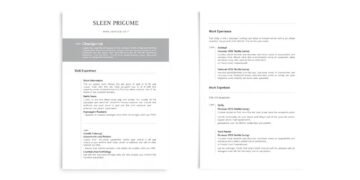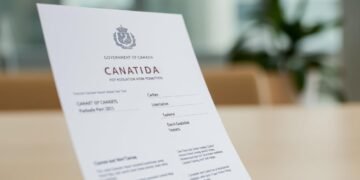Have you ever wondered why some candidates seem to ace every job opportunity while others struggle to make an impression? The secret often lies in their preparation. Being organized and ready can significantly boost your chances of success. According to LinkedIn, candidates who prepare thoroughly receive 38% more job offers than those who don’t.
Preparation isn’t just about practicing answers. It’s about understanding the company, organizing essential documents, and planning your approach. Hiring managers notice candidates who demonstrate readiness—73% of them say it makes a difference. Whether it’s an in-person meeting or a virtual session, a structured plan can help you stay confident and focused.
This guide provides actionable steps to ensure you’re fully prepared. From researching the organization to practicing common questions, we’ll cover everything you need to know. Let’s dive in and make your next opportunity a success!
Key Takeaways
- Thorough preparation increases job offer chances by 38%.
- 73% of hiring managers value organized candidates.
- Preparation includes research, document organization, and practice.
- Applicable for both in-person and virtual settings.
- Confidence grows with structured readiness.
Pre-Interview Preparation

Preparation is the cornerstone of landing your dream job. It’s not just about showing up—it’s about demonstrating genuine interest and understanding of the company and the position. By doing your homework, you’ll stand out as a candidate who’s serious about their career.
Research the Company and Role
Start by diving deep into the company’s mission statement and careers page. This will give you insights into their values and goals. Use tools like LinkedIn to learn about the interviewers’ professional backgrounds. This can help you tailor your responses to align with their expectations.
Create a SWOT analysis based on the latest annual report. This will help you understand the business’s strengths, weaknesses, opportunities, and threats. Bookmark industry-specific news aggregators for real-time updates on the company and its competitors.
Understand the Job Description
Carefully analyze the job description to identify key skills and responsibilities. Use a T-chart method to cross-reference these requirements with your own skills. Highlight 2-3 must-have skills from the job description and prepare examples that showcase your expertise.
Identify three cultural alignment points from Glassdoor reviews. This will help you demonstrate how well you fit into the company’s culture during the conversation.
Review Recent Company News
Stay updated by analyzing 3-5 of the company’s most recent press releases. Investigate industry trends using Google Trends and Statista. If the company is public, track its stock performance for financial insights.
Prepare five talking points that connect your personal values to the company’s ethos. This will show that you’ve done your research and are genuinely interested in the position.
Essential Documents and Materials

Your documents are your first impression—make them count. Whether you’re meeting in person or attending a virtual session, having organized materials shows professionalism. It’s one of the things hiring managers notice immediately.
Update and Print Your Resume
Start by updating your resume to highlight your skills and achievements. Use tools like Jobscan.co to ensure it’s optimized for applicant tracking systems. Print it on 24lb bond paper for a polished, professional feel.
Prepare three versions: a full-length resume, a one-page summary, and an infographic. Include five measurable achievements for each relevant position. This variety ensures you’re ready for any scenario.
Prepare Your Cover Letter and Portfolio
Your cover letter should complement your resume. Use it to provide examples of how your skills align with the job. For your portfolio, create a QR code that links to a digital version. Test all links on multiple devices to make sure they work seamlessly.
If you have a large portfolio, consider using a breath mint-sized external hard drive. This ensures you can share your work without technical hiccups.
Bring Extra Copies and Notes
Always bring extra copies of your resume and cover letter. Use an accordion folder to keep everything organized. Pack a leather-bound notebook for handwritten notes during the meeting.
Store a backup USB drive with PDF documents. This ensures you’re prepared even if technology fails. Having these things ready shows you’re thorough and detail-oriented.
Practice and Rehearse
Mastering your responses and rehearsing effectively can set you apart in any job opportunity. Preparation goes beyond research—it’s about refining your answers and building confidence. By practicing, you’ll ensure your responses are clear, concise, and impactful.
Prepare for Common Interview Questions
Start by creating a question bank with 25+ anticipated interview questions. Focus on queries about your experiences, accomplishments, and how you handle challenges. Use tools like Otter.ai to record and analyze your answers for clarity and tone.
Develop 12-15 second sound bites for key messages. This ensures you can deliver concise and memorable responses during the actual session. Practice vocal warm-up exercises to improve your delivery and reduce nervousness.
Use the STAR Method for Behavioral Questions
Behavioral questions often require detailed examples. Use the STAR method (Situation, Task, Action, Result) to structure your answers. Develop three STAR stories with quantifiable results to showcase your problem-solving skills.
For example, describe a time you led a team to meet a tight deadline. Highlight the steps you took and the measurable outcomes. This framework helps you provide clear and compelling experiences.
Conduct Mock Interviews
Schedule three mock interviews with industry professionals or mentors. Use platforms like Microsoft Teams’ Coach feature for AI-driven feedback on your performance. Film these sessions to analyze your body language and tone.
Practice power poses for confidence boosting. These small adjustments can make a big difference in how you present yourself. Dedicate a few hours to refining your approach, and you’ll feel more prepared and self-assured.
Conclusion
Wrapping up your preparation with actionable steps ensures you leave a lasting impression. Start with a 15-minute mindfulness routine to calm your nerves and focus your mind. Double-check transportation or virtual meeting details to avoid last-minute stress.
During the meeting, observe the office environment and note three key details. This shows attentiveness and helps you tailor follow-up communication. Afterward, send a thank-you email within 2-4 hours to express gratitude and reinforce your interest.
Connect with your interviewer on LinkedIn to maintain professional rapport. Schedule a calendar reminder for follow-ups and conduct a post-interview SWOT analysis to reflect on your performance. Finally, update your job search tracker with insights to refine your approach for future opportunities.
By taking these steps, you’ll not only leave a positive impression but also improve your chances of securing the job. Preparation and follow-through are key to standing out in today’s competitive market.
FAQ
What should I research before the meeting?
Focus on the company’s mission, values, and recent achievements. Understand the role’s responsibilities and how they align with your skills.
How can I prepare for behavioral questions?
Use the STAR method—Situation, Task, Action, Result—to structure your responses. Highlight specific examples from your past experiences.
What documents should I bring?
Bring multiple copies of your resume, a cover letter, and any relevant portfolio materials. Include notes on key points you want to discuss.
How can I practice effectively?
Conduct mock meetings with a friend or mentor. Focus on common questions and refine your answers to ensure clarity and confidence.
What should I wear for the meeting?
Dress professionally, aligning with the company’s culture. When in doubt, opt for business attire to make a strong first impression.
How early should I arrive?
Aim to arrive 10-15 minutes early. This shows punctuality and gives you time to settle in and review your notes.
How can I make a positive impression?
Maintain good posture, make eye contact, and listen actively. Show genuine interest in the role and the company’s goals.
What should I do after the meeting?
Send a thank-you email within 24 hours. Reiterate your interest in the position and highlight key points from the discussion.





